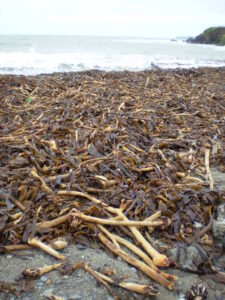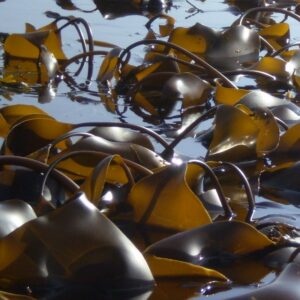Production of Alginate
There are essentially two processes for the preparation of alginates. They all start off with similar extraction procedures but vary in the methods used to precipitate the alginate at the end of the process, usually via the addition of calcium salts or with acid.

Extraction
Raw or dried weed is washed with acid to remove crosslinking ions that cause the alginate to be insoluble. The acid washed weed is then dissolved in alkali, typically sodium hydroxide, to produce a viscous solution of alginate and cell wall debris which contains a lot of cellulose. The solution is filtered to remove the cell wall debris and maybe treated to remove colour. Finally a clear, clean alginate solution is left.
Calcium Precipitation
This the most common and versatile of precipitation methods is the calcium method. In this method calcium salts are added to the filtered liquor to produce a fibrous precipitate. This fibre is then left to harden’ before being recovered. One method of recovery involves blowing air into the tank and skimming the floating the fibrous mat off the surface.

The recovered mat of calcium alginate is then treated with more acid to remove the calcium ions and leave an insoluble alginic acid fibre. This fibre can then be mixed with various alkali salts eg sodium carbonate to form sodium alginate.
Acid Precipitation
Another and more direct method of precipitation is by using acid directly. This method has the advantage that the calcium addition and subsequent removal is avoided making an inherently simpler process. However it will only work with certain strong gelling types of weeds. With weeds such as Ascophyllum the acid precipitate formed is too soft too press and dewater and cannot be used. So in terms of seaweed types that can be used this process is much less flexible.
Further information on alginate structure and properties can be accessed using the arrows in the Further Reading box below.
Further Reading
Read more on Alginate
